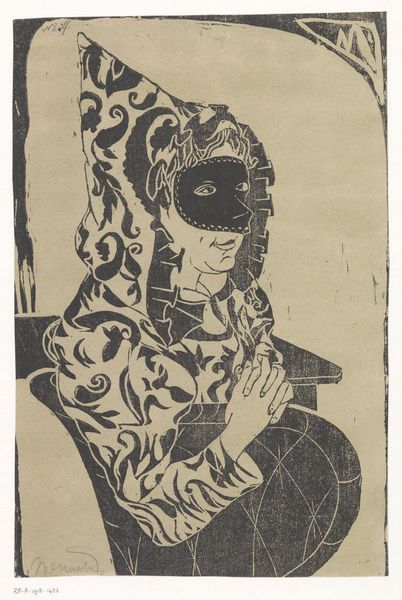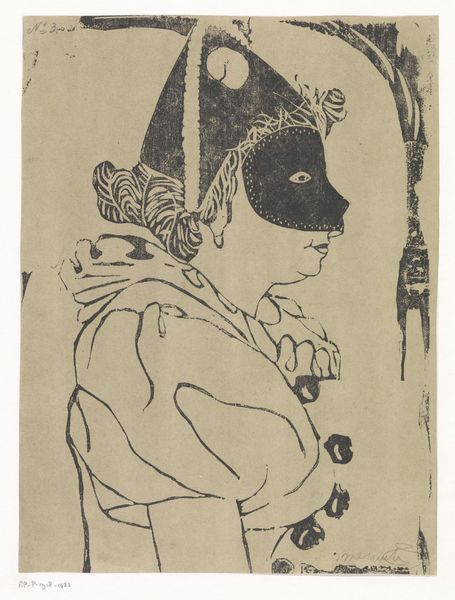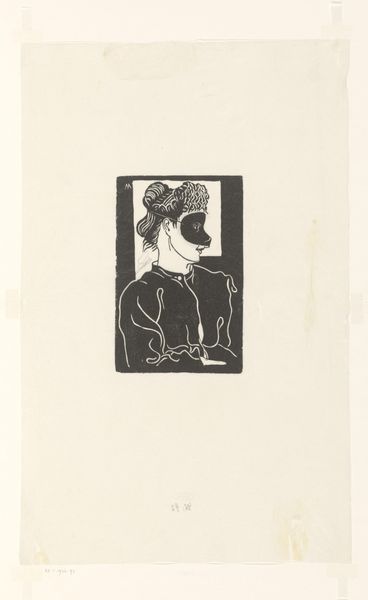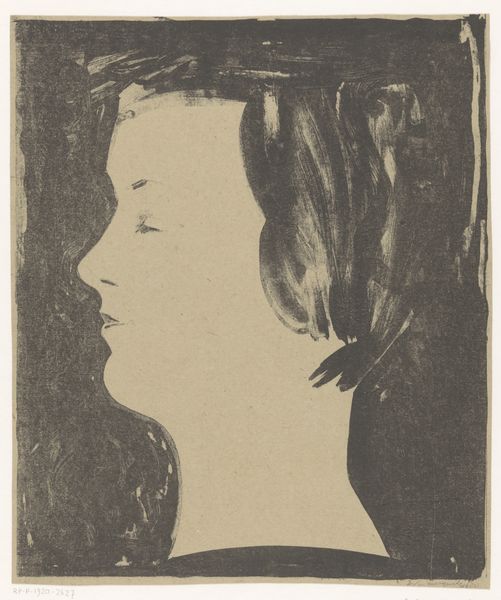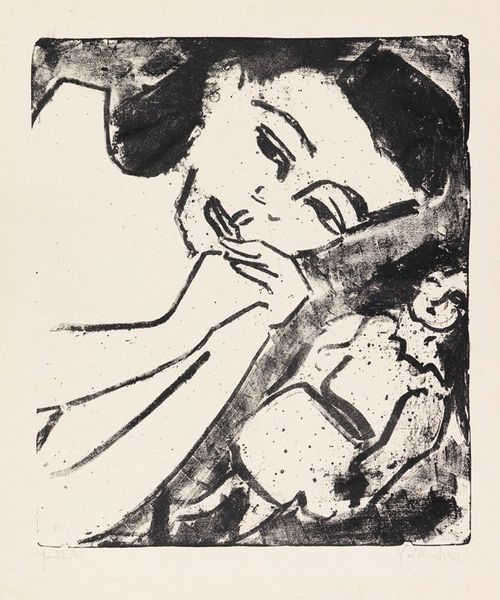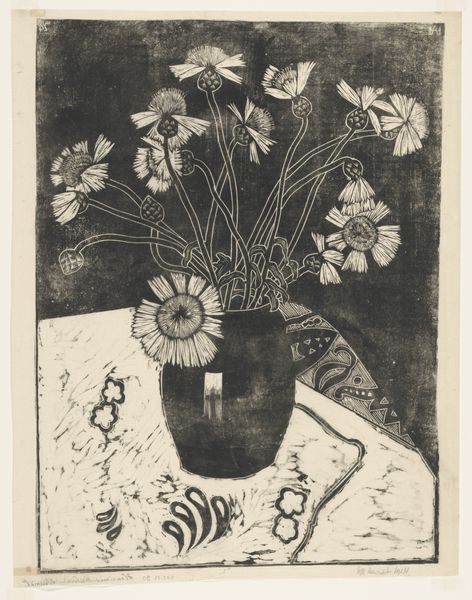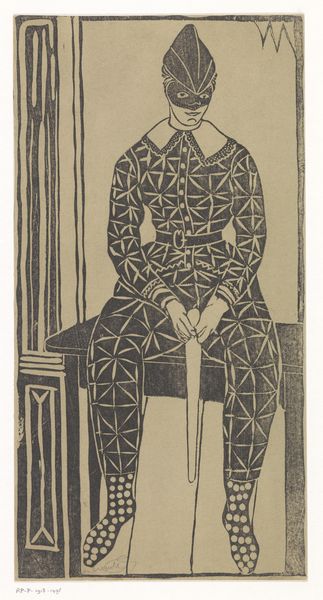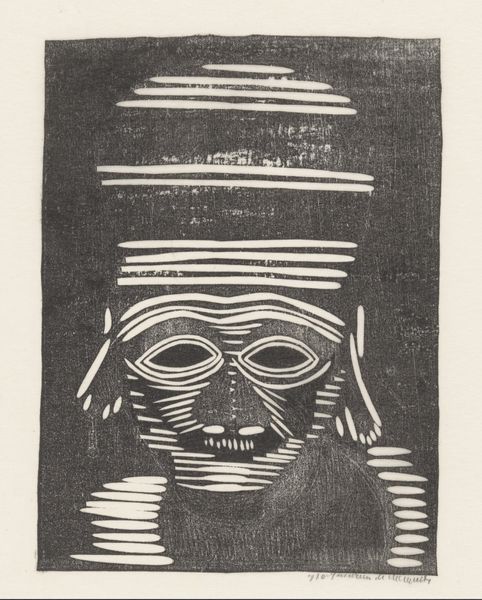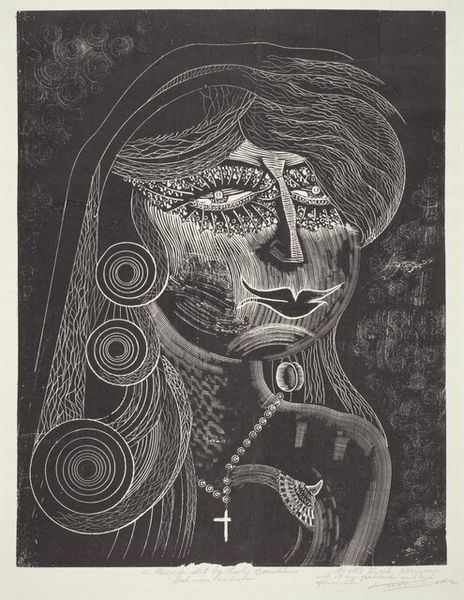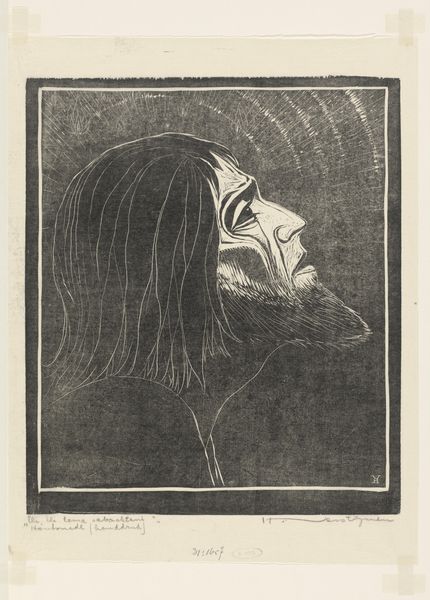
print, linocut
#
portrait
#
ink drawing
# print
#
linocut
#
figuration
#
linocut print
#
symbolism
Dimensions: height 169 mm, width 115 mm
Copyright: Rijks Museum: Open Domain
Editor: This linocut print, titled "Gemaskerde vrouw" or "Masked Woman", was created around 1899 by Samuel Jessurun de Mesquita. It's striking how the mask dominates the portrait, yet the overall image feels somewhat unsettling rather than playful. What can you tell me about this piece? Curator: Indeed. The use of a mask, especially within the artistic movement of symbolism, reflects the complexities of societal roles and identity at the time. Prints were becoming increasingly accessible, and the proliferation of masked figures suggests a wider fascination with anonymity and performance in public life. Editor: Performance? Curator: Consider the rising popularity of theater and cabaret. The mask can symbolize hidden desires, subversion, and the blurring of social boundaries. The choice to render it in linocut, a relatively inexpensive medium, may suggest it was aimed at a broader audience than traditional fine art prints. How do you perceive her gaze, given the mask? Editor: I see tension – the part of her face that isn't obscured looks somewhat uncomfortable, as if she's concealing something even beyond her expression. What about the cultural background? What made him want to create something that seems very focused on social class? Curator: Think about the late 19th century. Class distinctions were stark. There was social unrest. Mesquita, active in artistic circles in Amsterdam, would have been acutely aware of these divisions and how individuals navigate and perhaps challenge them through image and presentation. A work like this can question appearances. And print, inherently reproducible, could serve to disseminate that critique more broadly. Editor: I hadn't thought about the distribution aspect. I suppose affordable art also challenges existing hierarchies. Curator: Precisely. So, it becomes not only an artistic statement but a social one, influencing and engaging a wider audience in a silent yet powerful dialogue about identity and social expectations. Do you have any more thoughts? Editor: I see a deeper meaning now, that connects back to how the image was both presented and consumed, as well as created. It challenges assumptions of art being a product just for wealthy individuals. Thanks!
Comments
No comments
Be the first to comment and join the conversation on the ultimate creative platform.
